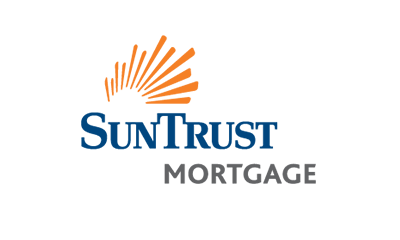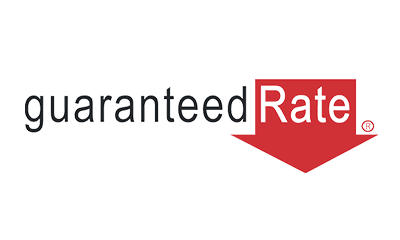Refinancing Explained
Refinancing your mortgage entails paying off your original
home loan by replacing it with a new loan featuring different terms. Many
homeowners do this in order to lower their monthly payments, which can be done
in a number of different ways – some of which offer better long-term benefits
than others.
In some cases, you might qualify for a lower loan rate. This
could serve you well in a couple of different ways. First, a lower rate can
decrease your monthly mortgage payment, allowing you to divert that money
elsewhere in your budget or savings plan. Next, you’ll pay less money in
interest over time. Over the course of a 30-year mortgage, that adds up to a
lot of savings.
Another way to get a lower monthly payment is by extending
your loan term. For example, say you bought your house five years ago with a 30-year
mortgage; you’re now down to just 25 years of payments left. You could
refinance your mortgage to start over at 30 years.
You now have a lower loan amount after five years of
payments, and by stretching it out over a longer period, you’ll reduce those
payments each month. On the downside, you’ll end up paying more money in
interest over the long run.
Closing Costs
Just like a regular mortgage, you’ll have to pay closing
costs to your lender as part of a refinance. When calculating your potential
savings with a refinance, you need to consider these extra costs.
Saving $40 a month may not feel like a lot compared to a few thousand dollars you may pay at closing.
If you plan on staying in your house for a long time,
however, even small monthly savings may be worth it. Figure out when you’d
break even on your costs vs. savings, then see if you picture yourself in the
home at that point in your life.
Cashout Refinance
In addition to refinancing with the purpose of changing your
monthly payment, you can also apply for a cashout refinance if you have enough
equity in your home. This product not only pays off your original mortgage with
new loan terms, it also gives you a lump sum based on your home equity, that is
then rolled into the new loan amount.
When to Refinance Your Mortgage
Because refinancing comes with both pros and cons that vary
by situation, here are a few instances where it can be most helpful. If any of
these situations apply to you, you should at least look into refinancing more
closely to see if you could benefit.
When Interest Rates Drop
Up until recently, interest rates have been slowly but
steadily rising from the all-time low experienced in the aftermath of the Great
Recession. But the Federal Reserve recently reversed course and has placed a
hiatus on rate hikes for the rest of the year – at a minimum.
Some analysts even predict another rate cut in either 2019
or 2020. That part is conjecture, but if you recently purchased a home after a
rate increase, you may find that rates have mellowed out, which could equate to
substantial savings.
When Your Credit Score Jumps
Perhaps you’ve been steadily working to improve your credit
score, or paid off a large credit card balance and noticed a major boost. If
you qualified your mortgage with less-than-excellent credit and have now jumped
into a different credit category, you could qualify for a much better rate.
When You Can’t Afford Your Monthly Payments
Maybe you could afford your home when you first moved in,
but your circumstances have changed. Whether you lost your job, had a serious
illness, or went through a divorce, life changes and so do our financial
abilities.
In some cases, you may want to consider refinancing to
extend the length of your mortgage and lower your payments in order to stay in
your house. This can have major long-term implications for your finances,
especially if you’re older and refinancing to a 30-year mortgage. But it’s
still an option if you feel backed into a corner.
You Qualify to Drop PMI
Private Mortgage Insurance (PMI) is a hefty fee that’s
included in your monthly payments when you don’t make a full 20% down payment. Once
you have 20% equity in your home, you may be able to drop off that charge with
a refinance. Because home values are rising across the country, it’s taking
less time for homeowners to reach that equity threshold.
With a conventional loan, you may be able to get your PMI
dropped without refinancing – simply ask your lender. If you have an FHA loan,
however, you’ll likely need to completely refinance the loan in order to get
rid of your PMI.
What You Need in Order to Refinance
Refinancing is almost as complicated as getting a new
mortgage, but at least you won’t have to deal with sellers throughout the
process. Here’s some basic documentation you’ll likely need as part of the
application process:
- Recent paystubs and bank
statements
- Tax returns from the last
two years
- Credit report (requested by
the lender)
- Statements of debts and
assets
The refinancing process also requires a home appraisal to
confirm the value of your property. Most lenders require that you pay this fee
upfront, although some may include it in the closing costs.
Frequently Asked Questions
How much are closing costs?
Closing costs are estimated as a percentage of the new loan amount and currently average around 1.5%. That means a mortgage of $250,000 would cost about $3,750 for closing, although you may be able to roll those fees into the new loan.
How soon can you refinance your mortgage?
Most lenders require you to wait at least four to six months from the time you purchase your home to refinancing. You may be able to get around this wait by choosing a different lender or changing your loan type.
CHow long does refinancing take?
The timeline varies by lender, but is usually shorter than a regular mortgage. Most lenders advertise closing refinances between 20 and 45 days. The season may also impact how fast you can get it done.
Can you qualify with bad credit?
Lenders offering refinancing use the same lending standards as they do for standard home loans. If your credit score is on the rise, however, you may still qualify, especially if you get a government-backed loan.
Refinance Your Mortgage Today
Refinancing could save you money on your monthly payments. Get a quote today to see how much!
by Lauren Ward
Personal Finance Writer
Lauren Ward is a personal finance writer with nearly ten years of experience covering topics like loans, credit, and real estate. She lives in Virginia with her husband and three children.



